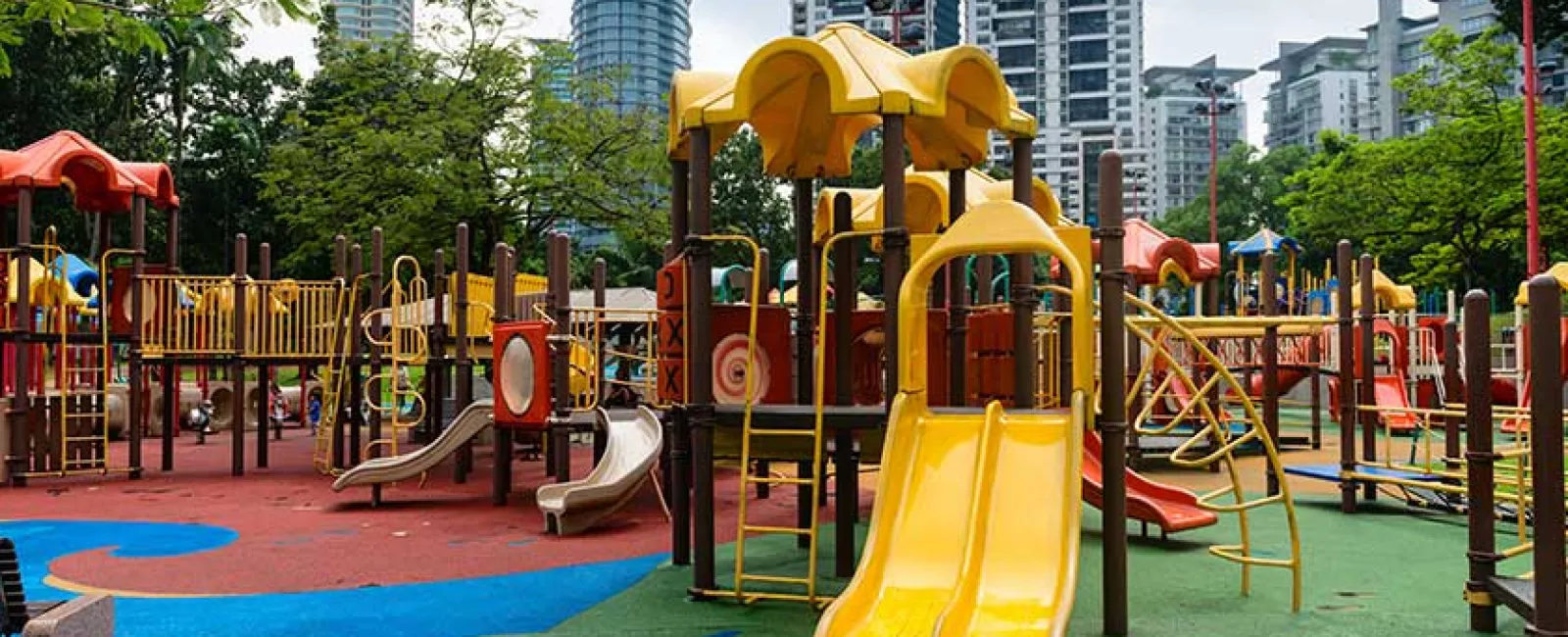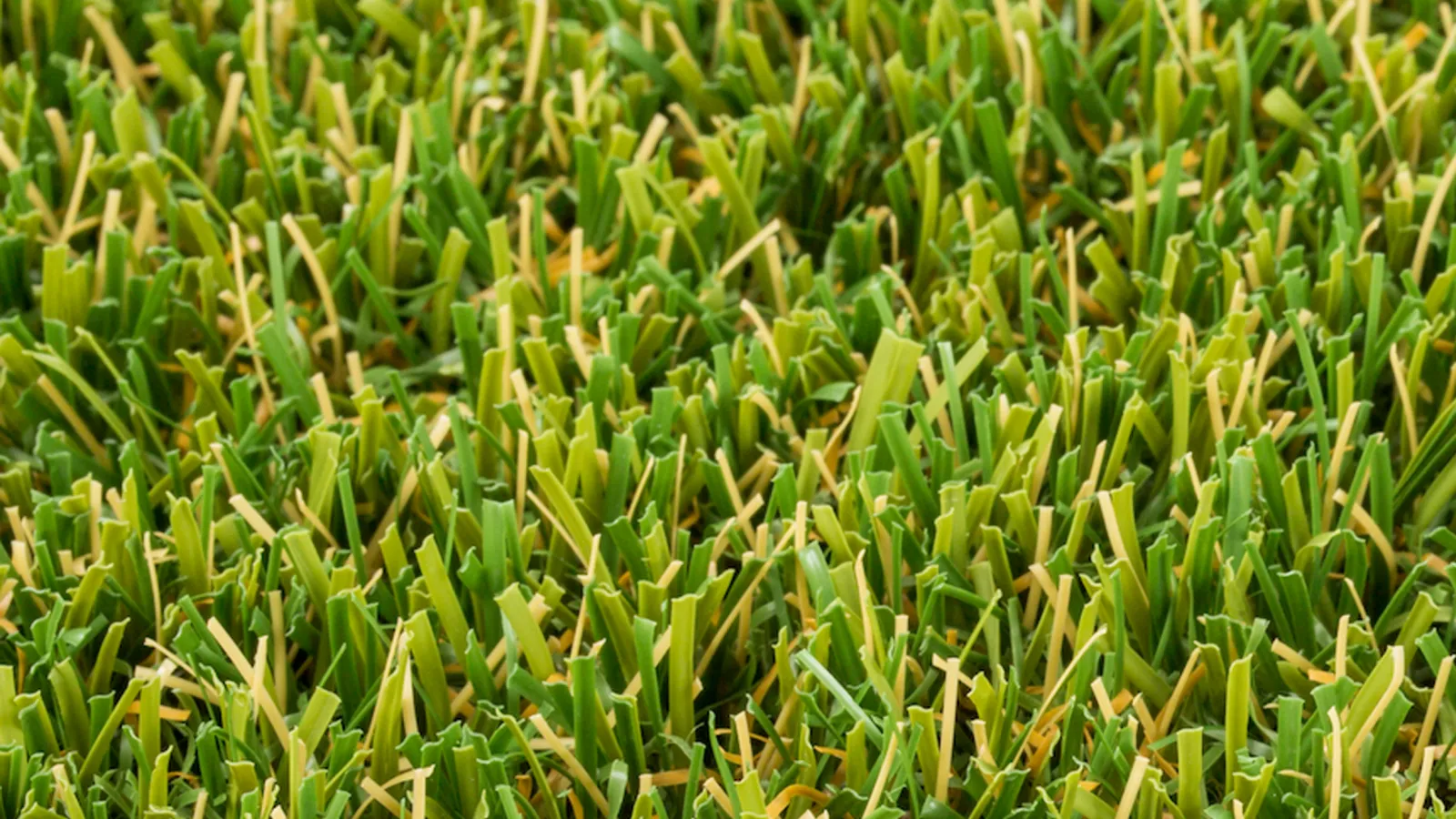Creating a safe and engaging outdoor space is a top priority for childcare operators. The play area isn't just a patch of green. It's a place where children run, jump, crawl, and explore. That's why more childcare centers across the Northeast are choosing artificial grass. Artificial grass for childcare centers offers a combination of safety, durability, and easy maintenance that natural turf struggles to match. And when it's installed correctly, it looks great year-round, no matter the weather.
We've worked with schools, daycares, and playground designers throughout Long Island, Nassau, Suffolk County, and nearby areas. Our experience shows that synthetic turf for childcare centers doesn't just improve the look of a play space. It helps create an environment where children thrive and where operators spend less time managing grounds and more time focused on care.
A Safer Surface for Active Kids
One of the biggest concerns at any childcare center is fall safety. With so many energetic little ones running around, trips and tumbles are bound to happen. Whether it's a misstep near the slide or a slip during a game of tag, the surface they land on can make all the difference. When natural grass wears thin or becomes muddy, it creates a slippery and uneven surface that increases the risk of cuts, scrapes, twisted ankles, and even more serious injuries.
Synthetic turf offers a more stable alternative that doesn't break down under pressure. Even better, it can be installed with shock-absorbing pads underneath to cushion falls. These padding systems are tested to meet national playground safety standards, including ASTM guidelines. They help protect children from fall-related injuries by reducing the force of impact.
What sets turf apart is its consistency. Natural grass wears out in high-traffic zones, leaving behind holes and divots. These uneven patches become hidden hazards that can cause trips and stumbles. Turf remains flat and secure, even in busy play areas. When we install turf for childcare centers, we know that every square foot needs to be safe enough for running feet and tiny hands alike. It's not just about play. It's about peace of mind for every parent, teacher, and facility manager watching from the sidelines.
Fewer Allergies, Pests, and Chemicals
Children spend a lot of time close to the ground. They sit, crawl, lie down, and explore with their hands and faces pressed against whatever surface is below them. Natural grass may seem harmless, but it often brings hidden challenges. Grass pollen is one of the most common allergy triggers for young kids. For those with asthma or seasonal allergies, being outdoors during spring or summer can lead to sneezing, watery eyes, and difficulty breathing. That's not the kind of outdoor experience anyone wants.
Natural lawns also attract insects. Ants build hills in open patches, bees buzz around clover, and ticks hide in thick blades. These pests can bite or sting, and in some cases, they carry health risks. To keep them at bay, lawn care teams rely on chemical treatments. Fertilizers, herbicides, and pesticides may improve the look of a lawn, but they leave behind residue that children could easily come into contact with.
Artificial grass removes those variables. It doesn't produce pollen and doesn't create a habitat for pests. With turf, there's no need for chemical treatments to keep the surface looking clean and usable. That makes a big difference for centers that want to lower the risk of allergic reactions and create a safer outdoor experience for children. It also helps reassure parents who are concerned about their child's exposure to chemicals and allergens. We've seen firsthand how turf transforms play areas into spaces where all kids can enjoy being outdoors, even those with sensitivities.
Cleaner Play Spaces, Indoors and Out
Anyone who works at a childcare center knows how quickly dirt travels. After a single trip to the yard, kids come back in with grass stuck to their shoes, mud on their clothes, and dirt on their hands. On rainy days, that mess only gets worse. Natural grass turns soft and muddy, especially in areas where kids play the most. That mud gets tracked into classrooms, bathrooms, and hallways. Cleaning becomes a full-time job, and carpets never quite look the same.
With artificial turf, cleanup becomes a whole lot easier. Turf doesn't break down into mud when it rains. It has a built-in drainage system that allows water to pass through quickly, which means no puddles and no soggy footprints. After a storm, the turf dries fast and is ready for use without delay. This keeps outdoor areas accessible even when the weather isn't ideal.
Because turf doesn't shed clippings, dust, or dirt, it cuts down on the amount of debris that gets dragged indoors. That leads to a cleaner, more hygienic environment inside the building as well. For staff, that means less time scrubbing floors and more time focused on the children. For parents, it means fewer grass stains and muddy laundry to deal with at home. And for the kids, it means more uninterrupted playtime in a space that stays neat and inviting every day of the week.
Year-Round Greenery with Minimal Upkeep
Real grass in the Northeast struggles through seasons. It browns in winter, wears out under frequent use, and requires regular mowing, watering, and reseeding. That can be a challenge and a constant expense for childcare operators who want a reliable, green space for kids to enjoy.
Turf, on the other hand, stays green and fresh-looking all year. It's built to handle sun, rain, snow, and high foot traffic without breaking down. Maintenance is minimal. No need for lawn crews, irrigation systems, or constant attention. A quick brush-up and an occasional rinse keep it looking great.
This low-maintenance benefit is especially helpful for centers with limited outdoor space. You don't need heavy equipment or a groundskeeping team to maintain a turf area, which frees up time and resources.
Withstands Heavy Use and Play
Children don't go easy on playgrounds. Grass can quickly wear down under constant foot traffic. Once a bald spot forms, it only gets worse. Exposed dirt, puddles, and uneven patches turn into a mess. The more popular the play area, the faster natural grass degrades.
Synthetic turf is designed to take a beating. We've installed turf in schools and playgrounds that get used every day by dozens, sometimes hundreds, of children. The blades hold up. The surface doesn't mat or rip. And with the right infill and backing, turf stays in place without lifting or wrinkling.
This durability means you don't have to close play areas off for rest, regrowth, or repairs. Kids can enjoy outdoor time every day without pause, and you won't be stuck constantly patching up the ground.
Customizable Designs for Better Play
Artificial grass isn't one-size-fits-all. Many childcare centers choose to customize their turf areas with built-in shapes, games, and bright colors to encourage creative play. From hopscotch outlines to activity zones in different shades of green, turf can be designed to reflect your school's needs and themes.
These customizations aren't just for fun. They help structure play and can support both physical and cognitive development. Kids learn through movement and interaction. When the surface itself invites play, it becomes a tool for learning as much as recreation.
We've worked with childcare operators who used turf to carve out reading circles, sensory paths, or trike lanes. This helps to organize outdoor time while still keeping it playful.
Helps With Licensing and Compliance
In many states, including areas throughout the Northeast, playground surfacing must meet specific safety guidelines to pass inspection. Our turf systems are tested and certified by safety bodies like CPSI (Certified Playground Safety Inspector) and NPCI (National Certified Playground Contractors). That means they meet fall height protection and material safety standards required for childcare environments.
If your daycare is due for inspection or looking to expand, turf can help you check key safety boxes in a way that's reliable and long-lasting. The right system isn't just compliant. It is built to last and perform over time.
Saves Time, Labor, and Long-Term Costs
At first glance, turf might seem like a bigger upfront investment than seeding a lawn. But when you factor in the cost of mowing, watering, fertilizing, replanting, and pest control over time, turf starts to pay for itself. Add in the labor hours saved on cleaning and repair, and the long-term savings become clear.
Our turf installations don't require constant rework. Once it's in, it stays put. And for childcare centers that operate on tight schedules, being able to rely on a surface that doesn't break down is a big deal. We've seen centers go from patching and mowing weekly to simply sweeping once in a while.
A Final Word from Us
At Turf Tek, we've installed turf systems for childcare centers, schools, and playgrounds throughout Long Island and across the Northeast. Our materials are made in the USA and built with safety and longevity in mind. We bring decades of experience in both construction and landscaping. We know how to do the job right the first time.
From certified installations to fast turnaround and helpful guidance, we're here to help you build an outdoor space that kids love and parents trust. If you're looking to upgrade your childcare center's outdoor area, let's talk turf that works for your space and your goals.
Visit Turf Tek USA to learn more or get started with a quote today.


